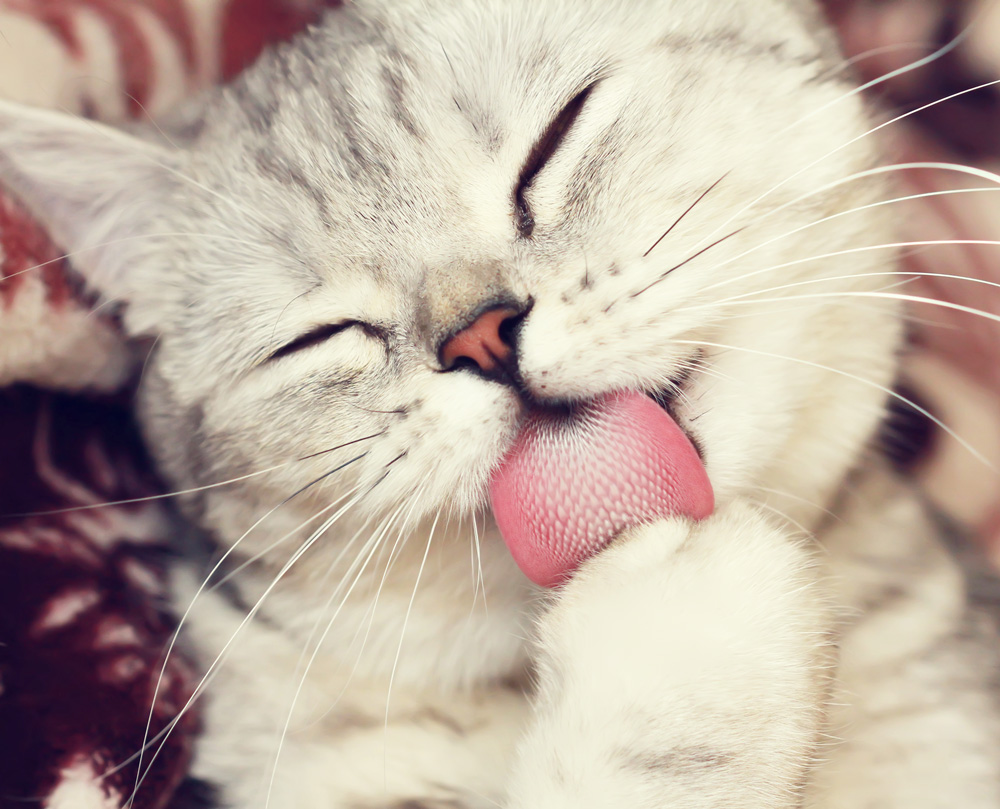Cat's Tongues

In 2005, scientists discovered that all cats lack one of a pair of proteins required to sense sweetness.
The missing protein was the result of a deletion, the loss of part of a chromosome or sequence of DNA, in a gene. The deletion in the gene prevented one of the proteins, that enables the perception of sweetness, from being created. Because all members of the Felidae share this trait, scientists believe that this occurred very early in the feline evolutionary tree.
The lack of ability to taste sweetness may have led early members of the Felidea to ignore plants entirely and become only hypercarnivores – obligate meat eaters.
There is still some question as to whether cats can taste sweet or not. Some believe they can taste sweet, but it is a very underdeveloped taste compared to that of salt, sour and bitter.
Although the cat’s sense of smell is considerably more developed than ours, cats have relatively few taste buds, numbering 473, compared to humans who have 9,000
The cat’s tongue also has a sensitivity towards temperature, the preferred temperature is around 30C (86F). Many cat owners will be aware that cats do not like to eat food straight out of the refrigerator for this reason.
Usually the tongue is associated with the sense of taste. A cat’s tongue however, has multiple functions that go well beyond taste. Anyone who has been licked by a domestic cat immediately feels the rasping, sandpaper-like surface of the cat’s tongue.
A cat’s tongue has backward pointing papillae on the surface called filiform. Papillea are rigid because they contain keratin that is also found in claws and human fingernails. Papillea aid in grooming, rasping meat from the bone and lapping up water. The tongue is made up of several groups of muscles, which move in various directions. It assists with tasting food, sensing the temperature and texture of food and swallowing of food.
The taste buds are located on the flattened, fungiform and circumvallate papillae but not the filiform papillae.
A healthy tongue is pink in colour. Any change in your cat’s tongue shape or colour can be an indicator of a problem and should be assessed by a vet.
There are 4 types of Papillae:-
1) Filiform papillae (also known as conical papillae), which is the most common form of papillae. These point backwards, which assists with grooming and also help the cat remove flesh from the bones of their prey. They are located on the front half of the tongue. This is what causes the rasping or sandpaper sensation when your cat licks you.
2) Foliate papillae (meaning “leaf-like”) these are the largest papillae found on the tongue. They are arranged in two groups, on either side of the tongue, in front of the circumvallate papillae.
3) Fungiform papillae, as the name would suggest, these papillae are mushroom shaped and are found along the sides of the tongue.
4) Circumvallate papillae (also known as vallate papillae), located at the back of the tongue. These dome-shaped papillae are arranged in a v-shaped row behind the fungiform papillae.
It is therefore evident that a cat’s tongue has many functions. In addition, it’s inability to taste sweetness, in the same way that humans do, helps to explain why cats do not need the range of foods that humans do.
The smell, temperature and texture of their diet is more important than the taste. This also helps us understand why cats are often happy to eat one type and even one flavour of food without the variety that we crave.